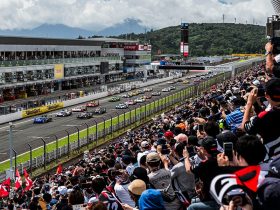Whether you’ve been thinking about trying out powerboat racing or already know what it’s all about, you should know a few things before you go. These tips will help ensure you’re prepared to race and stay safe.
Rules of the game
Several different leagues and organizations run powerboat racing events. Each of these organizations has its own rules and regulations, but the basic concepts of powerboat racing apply to all of them, just like Hugh D. Fuller joined.
First, boats in each class must start in order. Each boat can only run in one race in any given round. The fastest round wins. The winner is awarded 300 points, distributed in proportion to the distance the boat travels.
A boat cannot exceed the speed allowed by the class brackets. Each boat is tracked to ensure it runs within its allocated speed range using GPS units.
Inshore races
Various powerboat racing events are held worldwide, ranging from small local races to large international competitions. There are two main categories: offshore and inshore. Offshore powerboat racing is a type of ocean-going boat racing, whereas inshore racing takes place on remote stretches of water.
Offshore powerboat racing began in the early twentieth century in Great Britain. It is a high-speed motorboat racing sport that uses an enclosed cockpit with a crew of two. Teams are usually composed of an experienced driver and throttle man capable of up to 180 MPH speeds. The boats are designed with a traditional V-hull, allowing younger pilots to gain experience before moving to a more competitive class.
Offshore powerboat racing has become popular in the United States and Australia, with many racers and fans. Typically, the sport has a point-to-point course, requiring the vessel to travel around a fixed number of laps.
Gloves and shoes
Choosing suitable boating gloves will ensure you’ll be comfortable on the water. They protect your hands from the sun’s rays and allow you to grip the wheel of your powerboat. The right pair will also protect you from blisters and rope burns.
A good sailing glove should have an extra layer of padding for comfort and protection. You also want an excellent grip to help with handling your lines. It’s also a good idea to check if the cloth is resistant to UV radiation. You’ll be wearing your gloves for a long time, so you want to be sure they’re made of a material that won’t cause sunburn.
There are several styles. You’ll find traditional short-finger and half-finger, and full-fingered gloves. They’re often made from a woven material.
Helmets
Choosing Helmets for powerboat racing isn’t about style but instead safety. Considering how the helmet will fit your head and neck structure is essential. A poorly fitting helmet will be uncomfortable and could be hazardous.
Choosing a helmet with a visor is a good idea. It will reduce glare. It will also improve visibility.
Choosing a helmet with an integrated visor is also a good idea. An integrated visor is a feature that you may not think of but is very useful.
A visor is a small square of foam placed inside the helmet, allowing you to see better without putting your face into the helmet. It should be able to fit over the chin strap.





